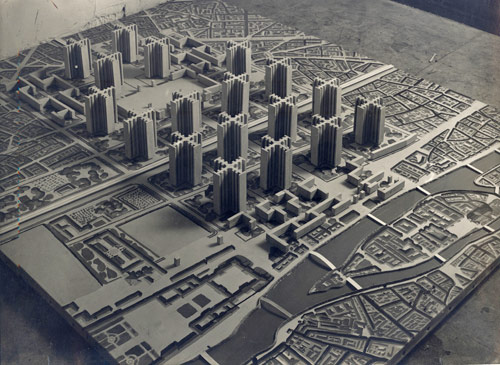Fr : version française / En: english version
A towering challenge...
Other solutions were emerging in Europe. By the end of the First World War, the "new business" of town planning had made a name for itself.
The 4th International Congress of Modern Architecture, meeting in Athens in 1933, provided an opportunity to look at the concept of modern urban planning with a focus on functionalism, paving the way for the "International Style".
Le Corbusier suggested a means of putting these ideas into practice. To adapt the centuries-old architecture of Paris to new requirements in line with city growth, he suggested razing the Marais district, at the time an insalubrious area, to provide space for new tower blocks. Although the project was provocative, it did raise some relevant questions as to how we should adapt old metropolises to the demands of modern life.


















